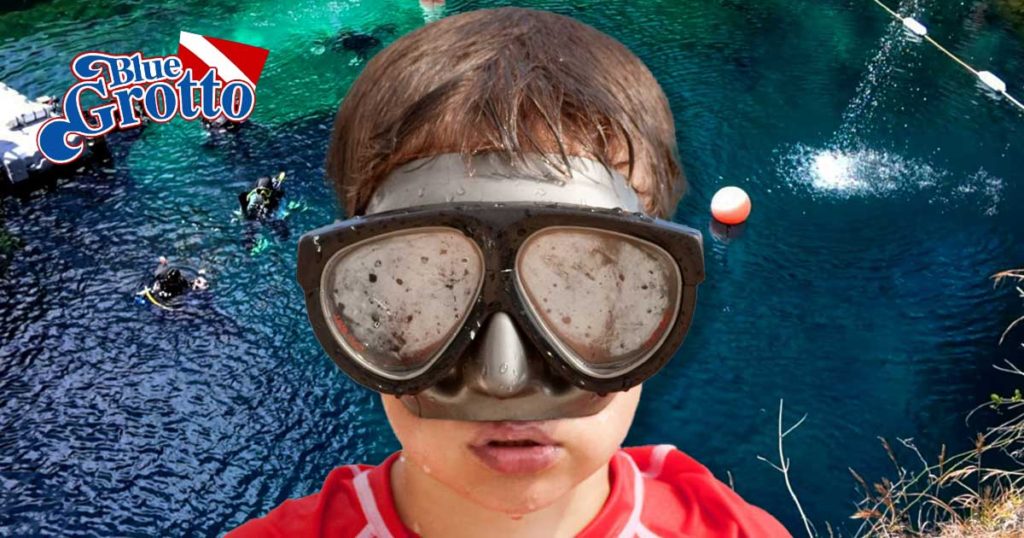Few things are more frustrating than investing the time, money and effort to come to Blue Grotto, only to be unable to see what everyone else is enjoying. Yet, that is precisely what will happen if you can’t keep your mask from fogging up.
So, how do you prevent this? It starts by understanding why your mask fogs. You then must know how to correctly prep your new mask for use and keep it fog-free during your dive.
Why does your mask fog up?
The manufacturer injects silicone into a mold to create your mask’s skirt. Before doing so, the mold is sprayed with what is known as a releasing agent. This helps prevent the skirt from tearing when removed from the mold.
When mated with the mask faceplate, some residual releasing agent leaches onto the glass. Unless you successfully remove this, no amount of saliva or defog will prevent your mask from fogging.
There are several different ways to remove the releasing agent.
- You may hear people say to scrub the inside of the mask with toothpaste. The problem is that all toothpastes are not the same. Some are not sufficiently abrasive to effectively clean the glass. Others are too abrasive and may end up damaging your mask.
- The most popular way is to use a commercial cleaner such as Sea Buff™. This has the right combination of cleansers and abrasives to clean the glass without damaging it. However, you may need to do this more than once to get all the releasing agent off.
- Arguably, the most effective method is to use a small blowtorch to burn off the releasing agent. This is not for the faint of heart. More than one mask has been destroyed by divers attempting to do this.
Assuming you have cleaned your mask successfully, this is still not enough to keep your mask fog-free.
You still need defog
The question here is, what defog is most effective?
- The all-natural solution is, of course, saliva. It’s not only effective but always available. The downside is that being organic, saliva residue can promote the growth of unspeakable things inside your mask.
- The most popular method is to carry and use a commercial defog. There are many brands to choose from. The downside here is that you have to have the defog readily available to apply just before you get in the water.
A lesser-known defog is baby shampoo. In a past life, our lead instructor, Harry, ran the Central Pacific’s largest dive operation in Maui.
Each morning, Harry would have the dive boat crews fill a five-gallon pail with water. Into this, they would pour a capful of Johnson’s Baby Shampoo. Before entering the water, the crew would have each passenger dip their masks in the bucket.
This proved surprisingly effective in keeping masks fog-free. Unfortunately, this method, while well suited for dive boat operations, is a bit too cumbersome for the average diver. Also, if you use this method, there is no need to rinse the inside of the mask further after dipping it in the bucket. You can just put it on and dive.
Using defog correctly
The world’s best defog won’t do you any good unless you use it correctly. We all know the basics:
- Apply defog evenly
- Rinse slightly
- Go diving
Despite this, many divers make common mistakes that prevent their defog from working.
- The first of these is dipping your mask in water before applying defog. To work effectively, you must apply defog to your mask’s faceplate while it is dry.
- The second mistake is allowing the mask’s inside to get wet after you apply defog. Yes, you must rinse the inside of the mask very slightly after applying defog. Past this, keep the inside of the mask as dry as possible. If you do not, you will rinse away all the defog and your mask will fog up.
If mask fogging has been a problem for you, go back through this article and make sure you are following all the steps it outlines. If you are not, follow them now and start diving fog-free.


